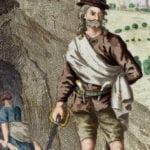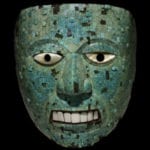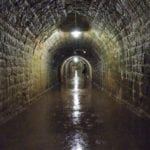 Weird Stuff
Weird Stuff  Weird Stuff
Weird Stuff  Our World
Our World 10 Ways Your Christmas Tree Is More Lit Than You Think
 Movies and TV
Movies and TV The 10 Coolest Stars to Set Sail on The Love Boat
 History
History 10 Things You Didn’t Know About the American National Anthem
 Technology
Technology Top 10 Everyday Tech Buzzwords That Hide a Darker Past
 Humans
Humans 10 Everyday Human Behaviors That Are Actually Survival Instincts
 Animals
Animals 10 Animals That Humiliated and Harmed Historical Leaders
 History
History 10 Most Influential Protests in Modern History
 Creepy
Creepy 10 More Representations of Death from Myth, Legend, and Folktale
 Technology
Technology 10 Scientific Breakthroughs of 2025 That’ll Change Everything
 Weird Stuff
Weird Stuff Ten Bizarre Facts About The Doge Meme
 Our World
Our World 10 Ways Your Christmas Tree Is More Lit Than You Think
 Movies and TV
Movies and TV The 10 Coolest Stars to Set Sail on The Love Boat
Who's Behind Listverse?

Jamie Frater
Head Editor
Jamie founded Listverse due to an insatiable desire to share fascinating, obscure, and bizarre facts. He has been a guest speaker on numerous national radio and television stations and is a five time published author.
More About Us History
History 10 Things You Didn’t Know About the American National Anthem
 Technology
Technology Top 10 Everyday Tech Buzzwords That Hide a Darker Past
 Humans
Humans 10 Everyday Human Behaviors That Are Actually Survival Instincts
 Animals
Animals 10 Animals That Humiliated and Harmed Historical Leaders
 History
History 10 Most Influential Protests in Modern History
 Creepy
Creepy 10 More Representations of Death from Myth, Legend, and Folktale
 Technology
Technology 10 Scientific Breakthroughs of 2025 That’ll Change Everything
10 Eerie Slave Hauntings From The Deep South
The northeast of the US has plenty of hauntings due to the length of time Europeans have been settled there. The South, however, has its dark history of slavery to bring up its ghost numbers. Given that millions of people were dehumanized, abused, and killed on the South’s plantations, it’s no surprise that tales of angry spirits abound. And, yes, some of them want revenge.
10 Savannah Harbor
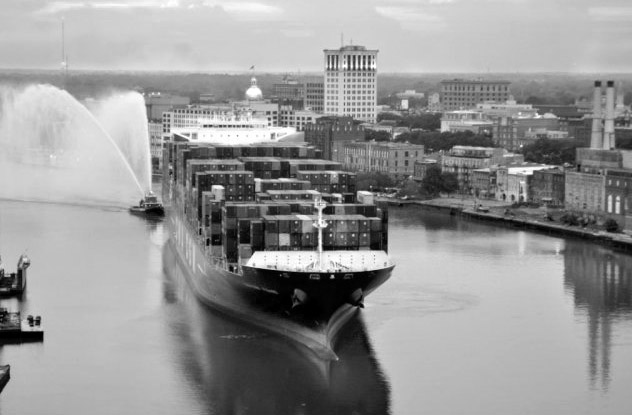
In 1820, the international slave trade was technically banned in the US. Pirates, however, made their money gathering escaped slaves and shipping them overseas, such as to the Caribbean and South America. The French ship Grietely was one vessel that took part in this, and in 1854 it pulled into Georgia’s Savannah harbor to collect 71 runaways.
The slaves, most of them Congolese, were rounded up and put onto the boat. Most of them were chained up, but some were restrained with only rope. None of them wanted to be there, and none of them were the sort to go down without a fight. There’s a reason the slave owners were willing to be rid of these particular runaways.
When the ship began leaving the harbor, many of the slaves on deck were able to break free from their rope restraints and leap into the sea. The crew shot at the escapees, but their problems were only beginning. Slaves below deck began assaulting the ship directly, breaking away some boards on the starboard side. The ship took on water and ultimately sank, the captain too proud and stupid to accept help from local tugboats.
Today, some sailors report that they can feel a force pulling them off course in the harbor. They also claim to have heard voices, in French and Bantu languages. Is it the slaves, still struggling with their last attempt at freedom, that are pulling at modern ships? Some speculate that they may not know the slave trade has ended, and that attacking ships is their way to get vengeance.
9 Plat-Eyes
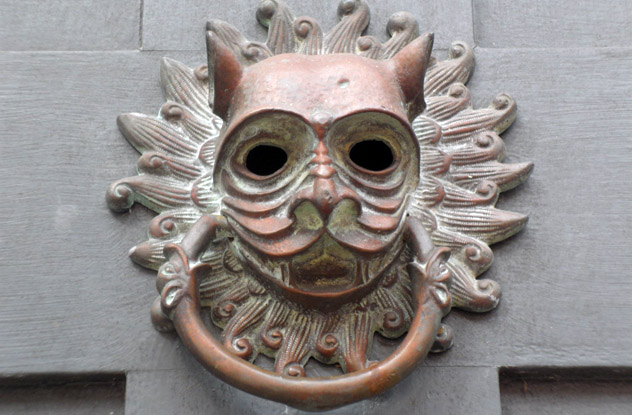
The Gullah are descendants of slaves that live in coastal areas of Georgia and South Carolina. One of the most unusual types of haunting in that area is a creature called a plat-eye, said to be a restless spirit that didn’t receive a proper burial. Often, the spirits keep a watch over some sort of hidden treasure.
The plat-eyes come in several forms, one of which is that of a humanoid with a single eye dangling from the middle of its brow. Legend blames many of them on Confederate landowners that buried their wealth to keep it out of Union hands. The landowners, say the stories, would behead slaves and bury them along with the riches to provide supernatural protection.
In other retellings, the plat-eyes are shape-shifters that take the form of animals. In 1935, the US government commissioned writers to interview former slaves. One, named May Ethel Pickett, reported that she’d encountered a plat-eye as a child one day on her way home from church. She had seen a white cat emerge from the woods. When she turned back, it had become a white dog. She ran, and when she turned back again it was a white mule.
8Buckner Mansion
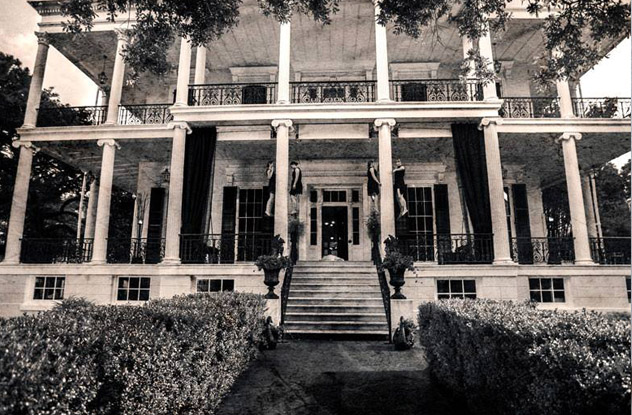
The Buckner Mansion in New Orleans will be very familiar to fans of the TV show American Horror Story—it was the setting for the third season. You can even rent the place yourself, if you have a few thousand dollars to spare. If you do, then it comes with its own housekeeper. Unfortunately, the housekeeper in question died in the 19th century.
Miss Josephine was a freed black woman in charge of the slaves that worked at the house. She was well-trusted and doubled as a governess and midwife. She ran the house flawlessly, and she continue to do so after the Civil War, even when all the slaves were gone. She was so dedicated that guests say she still runs the house today.
Guests have reported the sound of a broom and the scent of lemon—her favorite—moving from room to room. The chandeliers swing, doors open and close themselves, and lights flash on and off. Some people have seen her apparition at the window. A sense of sadness can apparently be felt in her room, the result of the various slave women and babies that died there during childbirth. Don’t worry about that if you rent it, though, as you have seven other bedrooms to choose from.
7 The Phantom Of Suck Creek
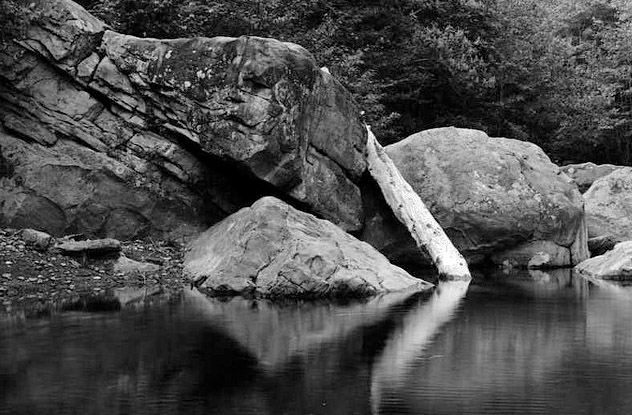
It’s no surprise that many ghost stories involving slaves are about runaways. The slaves that made a run seem naturally defiant and hardy, and thus the idea that their spirits would remain seems appealing. More than that, many runaways were punished with extreme brutality. Cruel murder and the restless afterlife go hand in hand.
We don’t know the name of the runaway that haunts the Cumberland Trail, near Suck Creek in Tennessee. Yet he is said to have fled from a particularly cruel master at some point in the 1790s. The slave walked from the plantation and ran down the trail, eventually collapsing after an hour. The slave owner, a team of men and hounds with him, found him unconscious.
They beat the unfortunate manwhere he lay and then hanged him from a tree. The white men believed the slave was dead and left, but the runaway wasn’t done yet. He freed himself from the noose, but was too injured to get far and collapsed again. When the lynch mob returned to cut down the body, it didn’t take them long to find the battered slave. They dragged him back to the farm and publicly mutilated him as a lesson to the other slaves.
Motorists report seeing a ragged figure running through the words, still trying to escape. Screams and moans can be heard around the hanging tree. Other sightings are of the slave wandering calmly around the trail, possibly looking for revenge on the men who killed him. It paints a sad story of a spirit destined to live every part of the experience over and over again.
6 The Ghosts Of Kingsley Plantation
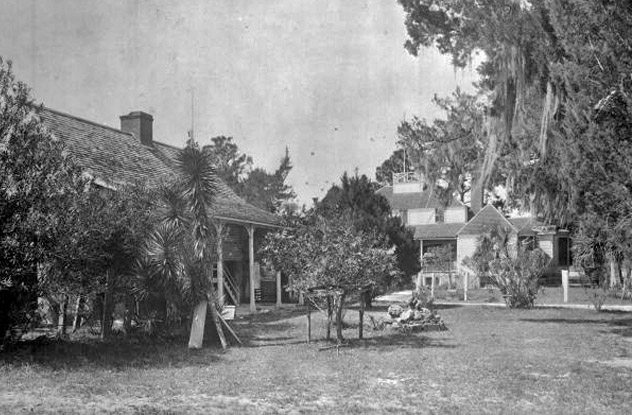
Zephaniah Kingsley had a reputation for being quite a decent guy as far as slave owners go. Once his slaves had completed their assigned work for the day, they were free to do whatever they liked, such as fishing or gardening. If they produced and sold anything, they kept the profits. Kingsley married a slave named Ana in an African cemetery (in addition to two other wives) and she went on to become quite wealthy in her own right. He even learnt an African language.
The real villain on that plantation in Jacksonville, Florida was another slave, who raped and murdered the slave women. His fellow captives hanged him from an oak tree, and his ghost is said to still stalk the place. Locals call him Old Red Eyes, because that’s what most people see of him, down the nearby road. The glowing orbs appear just behind your car, and the sounds of his victims follow them along the roadside.
A second ghost with glowing eyes resides in an unfinished house on the plantation. If you have a good heart then the ghost takes the form of a white woman that waves at you. If you’re a bad person, you see a wolf with flaming eyes.
5 The Hunt-Morgan House
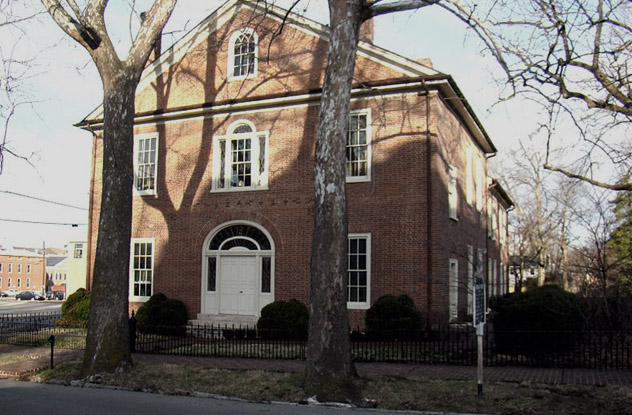
The Hunt-Morgan House, historically known as Hopemont, is famous in its own right. Thomas Hunt Morgan was born there in 1865, and he won the 1933 Nobel Prize in medicine. But while we love fascinating figures from the history of science, the Morgan family’s housekeeper Bouviette James is the star of this story.
Nicknamed Aunt Betty, James cared for the Morgan children in the mid-19th century. Among them was Thomas Morgan’s father Charlton. Along with his brothers, Charlton acted as a pallbearer for Betty when she died shortly after the Civil War. The family had been strong supporters of slavery—the father of the house John Hunt Morgan earned the nickname “Thunderbolt of the Confederacy” —so the respect they showed Betty reflects the mutual fondness between her and the family.
Betty was buried in the family plot. After her death, one of the Morgan children became very ill. A nurse was caring for him but dozed off. When she awoke, she saw a black woman in a turban and red leather shoes stroking the child’s forehead, humming a nursery rhyme. When the nurse approached, the figure vanished.
The child later died, and the nurse told the story to Mrs. Morgan and learned that the family had given red shoes to Betty as a gift. Mrs. Morgan was overjoyed that Aunt Betty was still around looking after the children, believing she would look after her dead son in the afterlife.
Today, the house is a museum, and you can visit should you like to try and see Betty for yourself.
4 Playful George
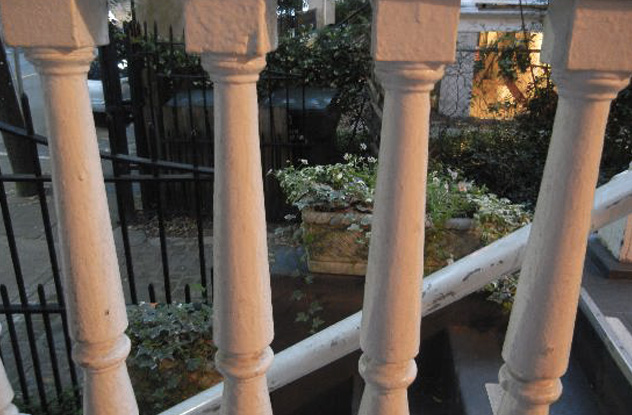
The spirit of a young slave boy resides at 126 Wentworth Street in Charleston, South Carolina. The place is a bed and breakfast today, but when it was a private home, its third floor housed a slave couple and their young son George. All reports suggest his life wasn’t too bad, considering the circumstances. He spent his days running errands, tending the stables, and playing by the river. He was happy.
Yet it wasn’t to last. The owner fell on hard times and George’s parents were sold, without George. Some stories say George had heard his parents were on a ship, and he drowned in Charleston harbor trying to reach them. The most accepted story is that he ran away but was caught, and when the owner collected George. the young slave boy was threatened with a bullwhip.
Whenever George finally died, guests that claim to have experienced his spirit suggest he still has a child’s mischievous nature. He’s a poltergeist—he opens and closes doors, switches on and off electronics, and rocks chairs. He’s also been known to shake people’s beds while they sleep. It’s not uncommon to hear staff yell “stop it, George!” at various parts of the house. Apparently, he sometimes obeys.
3 Booger Hollow
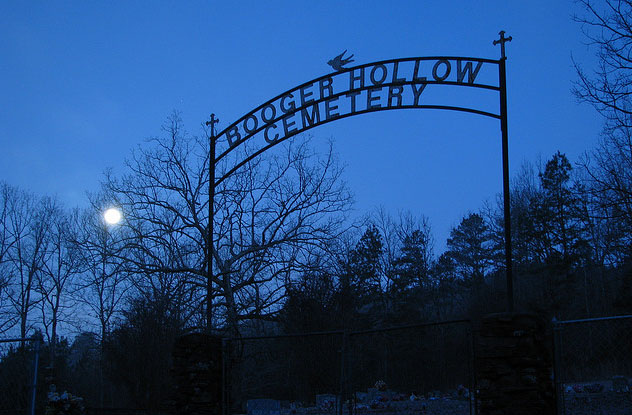
One of the most famous uprisings in the history of slavery was led by Nat Turner in Southampton County, Virginia in 1831. Rebel slaves killed 55 people, and many more slaves were killed in revenge. The act made many slave owners uneasy, and they marched their most unruly slaves further south to be sold to anyone that would take them. One such slave was named William, and he was sold to a farmer named Benjamin Hocking.
Hocking was a brute with a short temper and a penchant for violence, while William was a natural rebel whose spirit had remained unbroken by several owners. Together they were a volatile combination, and Hocking became increasingly harsh in his treatment of William. Eventually, William had had enough. When Hocking was about to begin a whipping, William grabbed an axe and put it to use on his owner’s head.
William’s freedom was very short lived. He was arrested and thrown in jail, and the sheriff happily turned him over to a violent mob. The angry crowd took the slave into the countryside and beat him to death with leather straps. William’s body was thrown into a sinkhole, and other slaves were forbidden from retrieving his body.
One story says that a few weeks later, a farmer passed near the area where William had died. He heard screaming and assumed another punishment was in progress. When he went to investigate (and possibly join in) he saw a slave bound, screaming, and writhing in pain. Yet there was no one else around, and the slave seemed to be suffering at invisible hands. The farmer fled, but many other people claim to have seen the ghost of William, tearing at his bonds.
The sightings stopped suddenly in 1945. Perhaps William broke free.
2 The Deadly Cellar Of Allen County
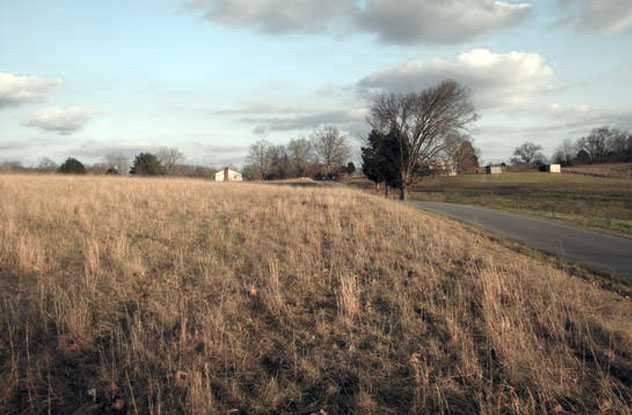
In Allen County, Kentucky sits a cellar with a doubly deadly past. Not long before the Civil War, a house stood at the site, owned by a married couple who kept 15 slaves. The slaves lived in an outbuilding at the back of the house, but when the slave owner decided they were out of line, he’d take them to the basement. He’d shackle them to the wall, often for days, until he figured they’d learned their lesson.
When war broke out, most of the slaves escaped, except for two that happened to be chained up in the basement. The slave owner was furious, and shot the last two in a fit of rage. To hide the murder, he buried the bodies in the cellar, then locked it up permanently. He died fighting for the Confederate army, and when his wife died years later, the house went to a young family that had no idea about its history.
The cellar had a musty smell they were unable to shift, and the children claimed to hear things down there. One night, the married couple awoke, each covered in cold sweat and believing they’d heard noises coming from beneath the house. The husband went to investigate—then didn’t return. When the wife followed, she found her husband dead at the bottom of the stairs, his neck broken. She left shortly afterwards.
The house is gone now, but the cellar’s smell and sounds are said to linger.
1 Igbo Landing

The story of Igbo Landing (also spelt Ebo or Ibo) is a powerful one. The Igbo were a tribe from what is today Nigeria, renowned for their particularly strong resistance to slavery. The act of defiance that gave Ebo Landing its name has been memorialized in everything from TV to a Nobel Prize winning novel, Toni Morrison’s Song of Solomon.
After being captured in Africa, a group of Ebo tribespeople were shipped to Savannah and sold to plantation owners including Congressman Thomas Spalding. The newly bought slaves went next to Dunbar Creek on St. Simon’s Island. When they were brought to land, the Ebo chief declared, “The water brought us, the water will take us away!” He then walked into the creek, with at least 10 others following.
The slavers yelled at the slaves to stop, and threatened them with guns, but the Africans had already decided that death was a better option than a life of servitude. They walked into the water and didn’t come back out.
Today, people report that on quiet and foggy nights you can still hear the rattling of chains and the chant, “the water brought us, the water will take us away.” One woman even claims to have seen the ghosts of the dead men, chained together, barefoot, and in rags. Some fishermen avoid the creek so as not to disturb the ghosts.
In 2002, a number of Ebo tribesmen traveled from Nigeria to bless the ground. The leader of the congregation said he had come “to evoke their spirits, to take them back to Igboland.” Two centuries later, perhaps the water finally took them away.
Alan doesn’t believe in ghosts, but very much enjoys the stories behind them. You can hear about his life as a list writer on Twitter. It mainly involves drinking coffee.




